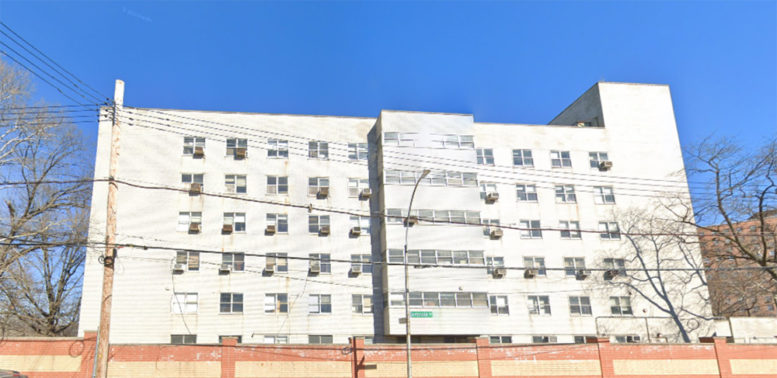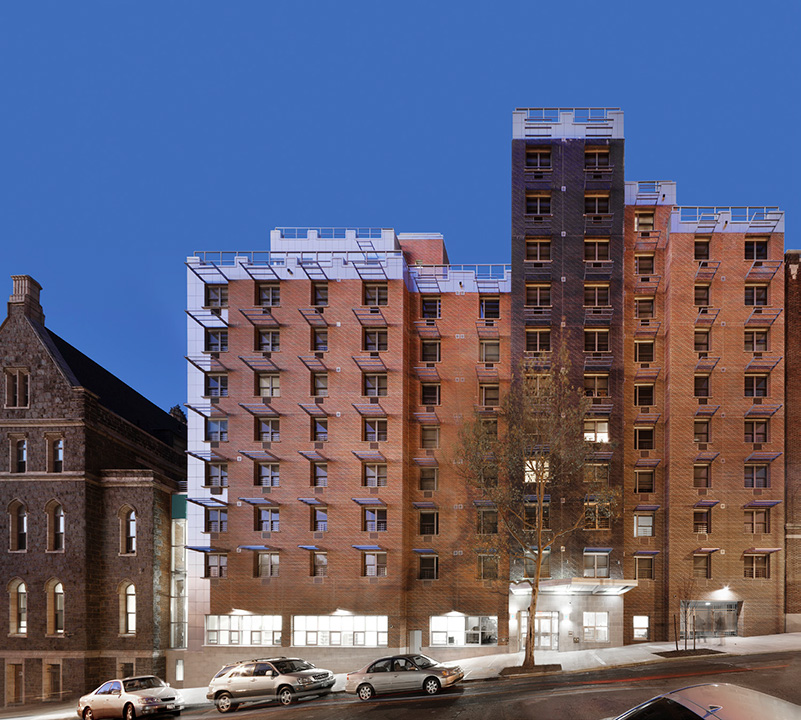
Public Service Commission Chair Sends Letters to State Utilities Requesting Actions To Mitigate Fuel Supply Disruptions
Governor Convenes Fuel Providers in New York State to Ensure Adequate Supplies are Available
Tips for Consumers To Maximize Energy Efficiency, Affordability, and Comfort
Governor Kathy Hochul today announced new State actions to prepare New Yorkers for rising global energy costs and supply issues expected this winter. At Governor Hochul's direction, Public Service Commission Chair Rory M. Christian sent letters to Chief Executive Officers of New York State's largest utility companies, urging measures to mitigate the anticipated extreme commodity price increases over the winter and enhanced customer communications. The Governor also directed State agencies to convene fuel providers across the state to ensure adequate heating fuels are available this winter. New Yorkers can also take advantage of cost-efficient programs in anticipation of the winter to adopt energy efficiency and electrification solutions for homes and businesses.
"Just like the heat waves experienced earlier this summer, New Yorkers should be fully prepared this winter for rising global energy costs as temperatures drop and it takes more energy to heat their homes," Governor Hochul said. "My administration is working closely with partners across the state to make sure New Yorkers have access to assistance and programs that help manage these rising costs while keeping their homes warm during the colder months."
The global commodity costs of natural gas, heating oil, and propane have continued to rise, resulting in utility and heating cost increases, along with additional increases oil and gas prices. In his letter to utility companies, PSC Chair Christian is requiring that utilities enhance the reliability of the natural gas distribution systems during the upcoming winter heating season, which comes in response to the Governor's March directive for State agencies to find solutions to the expected increase in energy prices and potential supply issues related to home heating oil. Specifically, the state's utilities — including Con Edison, Central Hudson, Orange and Rockland, National Grid, NYSEG, RG&E, National Fuel Gas, and PSEG-LI — must undertake the following actions, among others, to mitigate the impact of potential oil supply disruptions:
- Enhanced Communications: Utilities will immediately send letters to dual-fueled commercial customers, including interruptible customers, to advise them to fill their alternate fuel tanks now.
- Fuel Storage Inspections: Utilities will inspect the alternate fuel tanks of all dual-fuel customers where human needs are served (e.g. New York City Housing Authority housing, homeless shelters, schools, hospitals, etc.) by November 1 to ensure they have adequate supply on hand (full tanks or the equivalent of five days of supply) before the winter heating season begins.
- Alternative Supply Review: Utilities will review utility emergency plans to address alternate fuel supply disruptions during peak gas demand. If dual fuel customers cannot be served with natural gas and are unable to replenish alternate fuel supplies, the utility should be prepared to work with local and state government agencies to protect public health and safety when temperatures drop below 20 degrees. The plan should include the roles and responsibilities for setting up warming centers, providing hot meals, establishing lists of master plumbers in case pipes freeze in unheated buildings, and identify the company and other resources that might be needed.
- Enhanced Coordination: In the event of an oil supply disruption, electric generators may have more difficulty procuring No. 2 Oil than home heating customers. Utilities are required to continue to have strong coordination with the New York Independent System Operator and major power generators to encourage the dual-fuel operators to fill tanks in advance of the winter heating season.
PSC Chair Christian requested a response with recommendations for how each utility will execute on all of the actions by September 30, 2022.
New York State Public Services Commission Chair Rory M. Christian said, "Global commodity prices are likely to stay inflated and rise during the winter heating season. It is therefore essential that utilities continue to have ongoing, robust communication with customers to help them access available assistance programs and be able to manage their energy costs. In preparation for this winter, utilities must also work with their "interruptible" customers, who by system design help to meet reliability needs during any periods of extreme cold weather by using alternate fuels."
In addition, the New York State Department of Environmental Conservation issued an Enforcement Discretion letter to support efforts to address fuel supply and cost issues related to the new bioheating fuel law. The Enforcement Discretion letter alleviates the lack of compliant fuel, especially in northern regions of New York State, by providing a limited, one-year reprieve from the new bio-blending requirement. Enacted in late 2021, the new law establishes minimum levels of biodiesel in all heating oil for use in buildings to reduce air pollution and greenhouse gases.
As energy prices rise during the winter months, New Yorkers can take the following steps to protect against higher energy costs:
- Apply for HEAP. Apply for HEAP. Beginning November 1, applications will be accepted for the Home Energy Assistance Program (HEAP) which can provide up to $976 to eligible homeowners and renters depending on income, household size and how they heat their home. To qualify for heating assistance from HEAP, a family of four must have a maximum gross monthly income of $5,485, or an annual gross income of $65,829.
- Take immediate action to be more energy efficient. NYSERDA offers energy saving tips for residents and homeowners, as well as businesses that can lower energy usage. NYSERDA also offers a range of home energy efficiency programs that can help save energy and reduce costs over time. Income-eligible customers may qualify for reduced cost or free energy upgrades to their homes through EmPower New York and Assisted Home Performance with ENERGY STAR® programs. Homeowners should also check with their local gas and electric utility companies to access discounted products and services that can help them lower their energy costs all year long.
- Receive a customized list of energy-related assistance in the State. New York Energy Advisor can help income-eligible New Yorkers managers locate programs that help them spend less on energy and create healthier and more comfortable spaces. With the New York Energy Advisor, consumers answer simple questions and get connected with energy-saving offers in New York State. Sponsored by NYSERDA and utilities, qualified New Yorkers can get help paying utility bills, receive special offers on heating assistance, and more.
- Sign up for Community Solar. Community Solar allows New Yorkers, including renters, co-op and condo owners, and businesses to save money every month on their electric bills. Consumers can subscribe to a Community Solar project where available and start receiving credits on their electric bill for the clean energy produced by a solar farm. Find more information on how to sign up for a Community Solar project here.
- Get a free energy audit. Homeowners across New York are eligible for a free home energy assessment through NYSERDA's Residential Energy Audit Program. Home energy assessments are available both in-person and using remote technologies. Trained and qualified contractors who provide energy assessment services can help homeowners decide which energy improvements are worth investing in, install the improvements, and assist in connecting homeowners with NYSERDA's low-interest financing programs.
- Reduce your business or building's energy costs. Community Energy Advisors across New York State can help residents, businesses, and multifamily building owners reduce their energy use and costs.
- Join a Clean Heating and Cooling Campaign. Participating in a campaign eases the process of replacing a community member's current heating or cooling system with clean heating or cooling technology by connecting members with pre-qualified contractors and outlining potential incentives, tax breaks, financing, and payment options. Experienced contractors can give a home or business owner a holistic assessment to determine if their home or business space will also benefit from weatherproofing upgrades that can further increase comfort and reduce energy bills. Visit NYSERDA to see if your community is participating in a Clean Heating and Cooling Campaign.
- Know your rights and protections. The New York State Home Energy Fair Practices Act has comprehensive protections for residential customers regarding their utility services. These rights include the option to pay bills in installments, a cap on late fees, sufficient notice prior to shut-off of services, and protections for those on a fixed income or with medical conditions. Learn about these from the Department of Public Service at AskPSC.
- Consider bill payment options. When getting in touch with your utility provider, inquire about billing options that allow for deferred payments or "budget billing" options that balance out bills that are higher in one season and lower in another. This can structure your payments and make it easier to navigate costs.
- Better understand the energy management of your building. Put Energy to Work provides a deeper understanding of tools and programs for businesses that help in energy management for commercial and industrial buildings and includes resources that can increase profitability, create a competitive advantage, and achieve greater resiliency.
Visit NYSERDA for more information about the programs, funding and technical assistance available to assist homeowners, renters, and businesses manage their energy needs.



